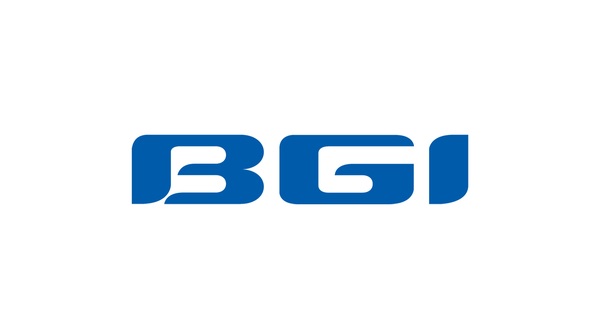NEW GUIDELINES FOR COVID TESTING

 |
A new ISO technical specification will improve testing procedures and contribute to a safer world.
SHENZHEN, China, May 13, 2022 /PRNewswire/ -- The COVID pandemic first reared its head in 2019 and despite concerted efforts from authorities and the public, it's still with us. Dedicated standardizer and biology expert Dr. Ye Yin, CEO of Shenzhen BGI Technology, introduced more about the technical specification in an interview with ISO.
Recently published, ISO/TS 5798 provides recommendations for the design, development, verification, validation and implementation of analytical tests for detecting the Severe Acute Respiratory Syndrome Coronavirus 2 (SARS-CoV-2) using nucleic acid amplification. It addresses pre-examination, examination and post-examination process steps for human specimens.
Most of us know that various types of COVID test are available, but the new technical specification uses nucleic acid testing. Can you tell us how that works?
Ye: The discovery of DNA in 1953 enabled a new era in molecular biology, moving pathogen research forward from the morphological level to the molecular level. Nucleic acid testing, which operates on this molecular level, has gradually become the mainstream of pathogen detection. That's partly because it can provide direct detection without prior isolation and culture of pathogens, making it convenient, fast and highly sensitive.
Such tests use a nucleic acid hybridization technique that is based on double-stranded complementary pairing of nucleic acids. Basically, technicians synthesize a single-stranded nucleic acid sequence complementary to the DNA or RNA of a specific pathogen as a probe. They would then label it using, for example, radioisotopes or enzymes, and subject it to hybridization with the nucleic acids of the pathogen to be tested. If a probe can be complementarily paired with the nucleic acid of the pathogen to be tested, it is possible to observe the signals of the markers, so that the species of the pathogen to be tested can be confirmed. The specificity and sensitivity of such tests are relatively high and are of crucial significance for the early diagnosis of infectious diseases.
How can a new technical specification for SARS-CoV2 testing help us to finally end the COVID pandemic?
Ye: COVID-19 has become the most widespread global pandemic in the past 100 years. It is also the first time that molecular biology genomics has been applied on a super-large scale in response to an emerging outbreak.
There are currently three methods for detecting SARS-CoV-2: nucleic acid tests, antigen tests, and antibody tests. The nucleic acid test is the 'gold standard' for pathogenic diagnosis, faster and more accurate than the other methods. But variations in procedures and materials used by laboratory personnel can contribute to variable quality test results.
The rapid global spread of COVID-19 meant that many testing reagents of varying quality emerged worldwide. Establishing clear quality assessment requirements for testing reagents was needed, together with guidance to enable accurate, early diagnosis and screening are essential to control the spread of the pandemic and treat patients in time. Clear guidance was urgently needed from ISO, which led to the development of ISO/TS 5798.
What are the main points covered by the new Technical Specification, and who is it aimed at?
Ye: ISO/TS 5798 mainly focuses on the use of nucleic acid amplification methods for diagnosis and screening of SARS-CoV-2 and proposes requirements and recommendations for the design, development, validation, verification, and implementation of testing methods.
It covers the steps of the overall process of pre-examination, examination and post-examination for the analysis of nucleic acid amplification method for detecting SARS-CoV-2, and specifies the methods and comprehensive assessment indicators, including accuracy, limit of detection, inclusivity, specificity, etc.
The new standardized guidelines fill a gap in the quality control of testing, and apply to medical laboratories, in vitro diagnostic developers and manufacturers, and institutions and organizations in support of research and diagnosis of SARS-CoV-2.
Why was a new testing standard needed? What's significant about ISO/TS 5798?
Ye: The new technical specification from ISO is the world's first guidelines for nucleic acid testing of SARS-CoV-2.
It provides important technical basis and support to global medical laboratories, in vitro diagnostic test reagent developers and manufacturers, and institutions and organizations for new coronavirus research. It supports the global response against the pandemic with science and technology and shares advanced technical achievements and successful experience of SARS-CoV-2 nucleic acid testing worldwide, which also helps establish reference values for the testing of other viruses and potential epidemics.
Are further COVID-related standards needed in order for us to end the pandemic?
Ye: The fight against COVID-19 involves nucleic acid testing and other activities such as infectious disease prevention and control, microbiological testing and public health emergencies response. I have been closely following the development of ISO standards related to COVID-19. For example, the ISO Technical Committee on tourism and related services published a publicly available specification that provides safer tourism services and products for tourists and residents.
Further standards related to COVID-19 are expected to be released in the future. These standards will jointly build a standard system for addressing COVID-19, guaranteeing the scientific approach, improving the quality of products and facilities for epidemic prevention and control, and contributing to the promotion and replication of excellent epidemic prevention experience. These ISO standards will help us take concerted action and win the global battle against COVID-19.
This article was written by Barnaby Lewis: https://www.iso.org/news/ref2798.html